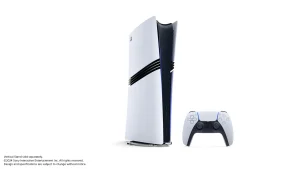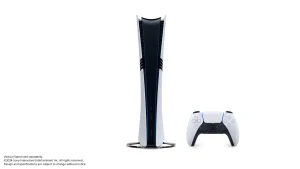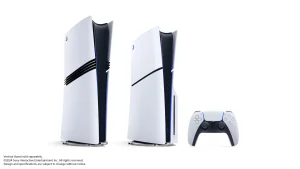If the coronavirus pandemic had swept across the world in 2011, everyone would have been using Skype to connect over video and voice calls. Instead, rivals like Zoom and Houseparty are having a moment of huge growth in 2020 thanks to consumers looking for Skype alternatives. In recent weeks we’ve seen people across the world sheltering at home and holding virtual yoga classes, beers with friends, and even school classes all over Zoom. It’s a unique once in a decade situation that’s highlighted Microsoft’s beleaguered Skype acquisition in a big way.
Microsoft originally acquired Skype for $8.5 billion back in 2011. It was the same year that Zoom and Snapchat were founded, and Apple launched its iPhone 4. Skype had more than 100 million active users back then, and 8 million of those were paying to use the service to make and receive calls using the voice over internet protocol (VoIP). Skype was the main way consumers actually talked to each other over the internet, with video calls making up 40 percent of all Skype usage back in 2011.
:no_upscale()/cdn.vox-cdn.com/assets/2361219/skypestock.jpg)
Skype had become so big that in 2011 The Onion joked that “Skype” would be added to the dictionary. Three years later, the verb was added to the Oxford English Dictionary, highlighting how popular the service had become. But Microsoft faced some big challenges early on to transform Skype into a profitable business and keep it relevant for consumers.
Microsoft’s Skype acquisition came just as chat apps like WhatsApp, Messenger, Snapchat, and WeChat were starting to gain momentum and challenge Skype’s dominance. Surprisingly, Microsoft opted to ditch its own popular Windows Live Messenger service in favor of Skype to try and ward off competition.
Microsoft had one big problem to solve early on, though. The company had acquired a service that was based on peer-to-peer (P2P) technology, which made it less efficient on mobile devices. This is where a lot of Microsoft’s Skype problems began. Microsoft transitioned Skype from these P2P networks to cloud-powered servers back in 2013, in order to capitalize on Skype integration on Windows Phone and improve its mobile apps in general.
Skype also became the default messaging app for Windows 8.1 back in 2013, and even shipped as part of Microsoft’s big Kinect push for the Xbox One console in the same year. Skype also appeared on the web as part of Outlook.com in 2013. All of this was powered by Microsoft’s transition away from Skype’s traditional P2P networks, but it was messy.
:no_upscale()/cdn.vox-cdn.com/assets/1722145/skypewp8_640.jpg)
The transition lasted years, and resulted in calls, messages, and notifications repeating on multiple devices. Skype became unreliable, at a time when rivals were continuing to offer solid alternatives that incorporated messaging functionality that actually worked and synced across devices. Instead of quickly fixing the underlying issues, Microsoft spent years trying to redesign Skype. This led to a lethal combination of an unreliable product with a user experience that changed on a monthly basis.
I wrote back in 2016 that Microsoft needed to fix Skype, instead of adding in useless emoji and launching and abandoning its Qik video messaging app. Microsoft didn’t really listen, though. The company went in a completely different direction with Skype in 2017, with a design that turned the app into something that looked like Snapchat. Unsurprisingly, people weren’t happy with the design and Microsoft was forced to kill off the Snapchat-like features and redesign Skype once again a year later.
During this time, Microsoft also pushed Skype for Business as the replacement for its Lync (Office Communicator) enterprise instant messaging software. Skype looked like it would power the future of Microsoft’s chat services across consumers and businesses, until Microsoft Teams arrived in 2016. Teams has quickly become Microsoft’s focus for chat and communications in recent years. The company has been aggressively pushing businesses to adopt Teams, at a time when rivals like Slack are trying to win big businesses over.
Microsoft Teams isn’t just for businesses anymore, either. Just this week, Microsoft announced its Teams plan for consumers. It’s part of a bigger push for Microsoft 365 subscriptions to families and consumers. Microsoft is trying to convince consumers that Teams can be used to connect to friends and family in a group chat or through video calls, and share to-do lists, photos, and other content all in one location. Microsoft thinks people who plan trips with friends or organize book clubs and social gatherings will be interested in Teams.
This Teams push has taken the spotlight off Skype in recent years, though. Microsoft has used the underlying technology it has with Skype to power its video and voice calls in Teams, while rewriting the chat and messaging experience that the company struggled to get right with Skype’s Messenger transition.
All of this has now led Microsoft to throw its weight behind Teams, even for consumers. Skype isn’t likely to go away anytime soon, but it’s not Microsoft’s focus anymore. “For now, Skype will remain a great option for customers who love it and want to connect with basic chat and video calling capabilities,” says a Microsoft spokesperson in a statement to VentureBeat. “With the new features in the Microsoft Teams mobile app, we see Teams as an all in one hub for your work and life that integrates chat, video calling, [and the] ability to assign and share tasks, store and share important data with your group, [and] share your location with family and friends, whereas Skype is predominantly a chat and a video calling app platform. We have nothing more to share.”
:no_upscale()/cdn.vox-cdn.com/uploads/chorus_asset/file/19860538/microsoftteamshome.jpg)
Microsoft said in 2015 that Skype had 300 million active monthly users. The company hasn’t updated those numbers in the tumultuous period that followed. We still don’t know exactly how many people are using Skype, but Microsoft did provide some hints this week. During a press briefing, Microsoft revealed Skype is used by 200 million people, an active user count that’s based over a period of six months and not a monthly active user count. During the coronavirus pandemic, this usage has increased to 40 million people using Skype daily, up 70 percent month-over-month. That suggests that 12 million people were using Skype daily, before the increase in demand.
Microsoft is refusing to provide monthly active user counts for Skype, most likely because the company doesn’t want any obvious comparisons to competitors or the 300 million it previously revealed in 2015 when the service was still growing. 40 million daily users is still a big number, even when chat apps like WhatsApp have since passed 2 billion users, and Telegram has exceeded 200 million monthly active users.
The real question is how are rivals like Zoom, Houseparty, and even Google’s Hangouts growing during this ongoing coronavirus pandemic? Houseparty and Zoom have both exploded in growth in the UK and US. Zoom currently sits at the top of the US App Store list, and second position in the UK App Store list. Houseparty is at the top in the UK, and number three in the US. Skype sits at number 75 in the US, and number 15 in the UK. Microsoft isn’t totally losing out here though, the company’s Teams mobile app is number seven in the US and number six in the UK.
:no_upscale()/cdn.vox-cdn.com/uploads/chorus_asset/file/19834489/zoomyoga2.jpg)
”Zoom does not share any numbers around users / usage, signups, or total number of customers,” says a Zoom spokesperson in a statement to The Verge. So it’s impossible to know the true number of Zoom users right now. Some estimates suggest Zoom had close to 13 million monthly active users last month, before consumers and businesses turned to the service in large numbers.
One of the many reasons consumers are flocking to Zoom and Houseparty is that they’re easy to use. Zoom users don’t need an account, it’s free to use for up to 40 minutes, and you can join meetings with just a simple link or code. Skype offers a way to create video meetings with no sign ups or downloads, but you probably didn’t even know this feature existed. Instead, Zoom’s simple app approach has won people over.
That ease of use has led to criticism over Zoom privacy, and the phenomenon of “Zoombombing,” where an uninvited guest uses Zoom’s screen-sharing feature to broadcast shock videos. Houseparty is equally easy to use, but it’s facing hacking rumors that the company is strenuously denying. Houseparty says it’s “investigating indications that the recent hacking rumors were spread by a paid commercial smear campaign to harm Houseparty.” The firm is even offering to pay out $1 million to “the first individual to provide proof of such a campaign.”
Even if Zoom and Houseparty won’t provide actual user numbers, it’s clear from the many stories of people using the services and anecdotal evidence that there’s some serious growth going on here. A recent App Annie report shows that Houseparty, Google Hangouts, Microsoft Teams, and Zoom are all seeing phenomenal growth for different reasons. Skype is still being used by broadcasters and in many locations worldwide, but a lot of people are turning elsewhere for video calls.
:no_upscale()/cdn.vox-cdn.com/uploads/chorus_asset/file/7177239/Photo_4.0.jpg)
There are many reasons for Skype missing out on this key mindshare moment, but Microsoft’s missteps with Skype’s reliability and user interface are surely to blame. This is highlighted best with Skype for Windows. After years of struggling to decide between touch-friendly (Universal Windows Platform) vs. traditional desktop Skype, Microsoft is now reversing course on its Skype for Windows plans.
Skype will soon migrate to an Electron-powered app, instead of UWP. It acts far more like a traditional desktop app now. “For users of the UWP app, it’s a background upgrade and we migrate your credentials, similar to what happens when updating an app on a mobile device,” says a Skype spokesperson in a statement to The Verge. “Customers will see the same Skype UI but they may see different functionality since Electron has more features than UWP.”
This, alongside the Teams focus, are early signs of where Skype will end up. Microsoft wasn’t afraid of ditching the 100 million people using Windows Live Messenger years ago, and I wouldn’t be surprised to see the company try and push Skype users over to Teams in the months ahead. Like Microsoft said, “For now, Skype will remain a great option for customers who love it and want to connect with basic chat and video calling capabilities.” The “for now” part of that statement is a telling sign that Microsoft’s focus is now Teams, not Skype.
































